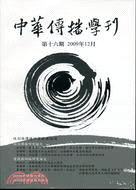 閱覽人數: 1061
閱覽人數: 1061
December
2009
No. 16
性別與傳播研究前瞻論壇
The Current Scholarship and Suggestions for Future Research in Feminist Studies頁數:215 - 253
作者(中)
曾國峰
作者(英)
Kuo-Feng Tseng
關鍵詞(中)
有線電視 ; 頻道競爭 ; 成批銷售 ; 收視率 ; 付費模式
關鍵詞(英)
cable television ; network competition ; bundling ; a la carte ; rating
中文摘要
「自由市場競爭」理論上應該是淘汰品質不佳,留下較好的產品。但在台灣有線電視頻道產業中,由於採用成批銷售的付費模式,雖然看起來有更多頻道競爭數量,但由於透過間接收視率分配獲利,在廣告量成長趨緩與收視費不變的情況下,製作成本不易增加,使得節目不敢大膽創新投資,内容差異性不大。本研究認為加入單頻單賣的付費模式,可以透過消費者偏好購買個別頻道,雖然短期内,可能會造成部分頻道收視率與廣告量減少,甚至退出市場,但也會讓市場規模不大的台灣,可以集中資源製作較高品質的電視節目,同時增加新頻道上架機會,長期來說,對活絡有線電視頻節目内容的產出還是利大於弊。
英文摘要
Theoretically 'free market mechanism' should make the best product and eliminate the bad one. In Taiwan's cable television industry, the operators bundle all the networks in one package for one price. Under the restrain of the diminishing of advertising revenue and the fixed monthly payment, few programming is able to increase the production cost. Eventually most of the programs look similar without differentiation and creativity. This paper considers that the mechanism of 'a la carte', directly charging consumer what they watch, is the other way to improve the performance of the cable television networks. In the short run, some of the networks that few consumers subscribe may be forced to have lower rating and advertising revenue or even forced out of market. However, in the long run, the resources will concentrate on few networks to produce better quality programming and encourage new types of channels.